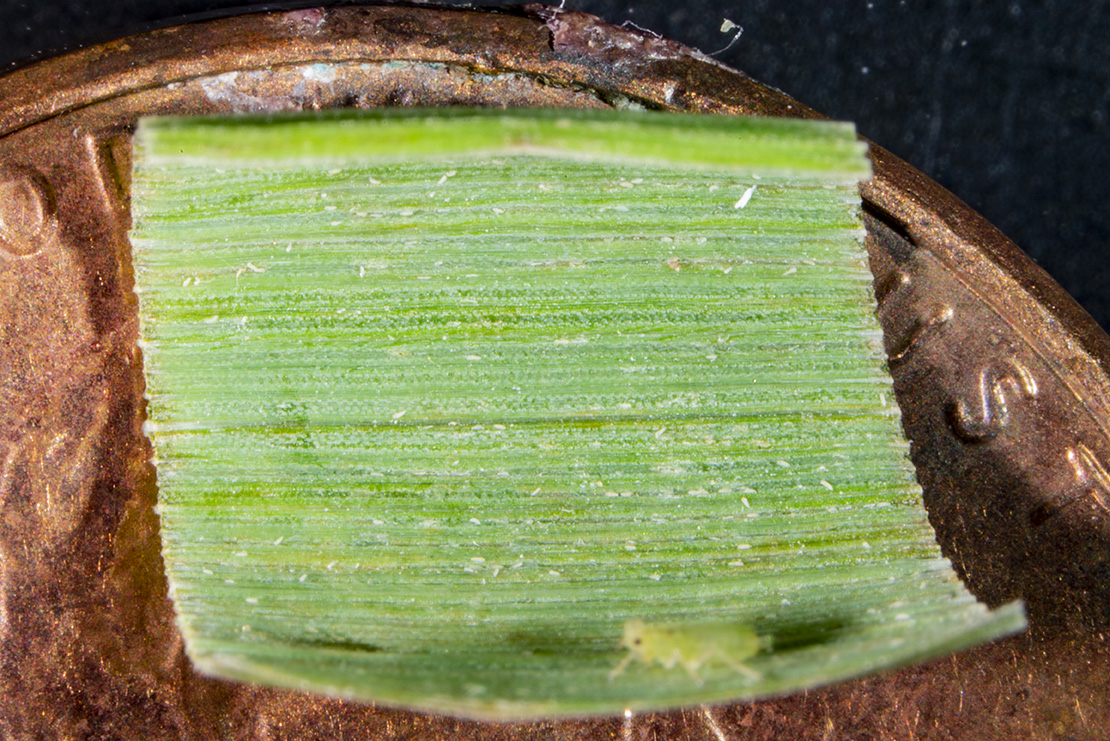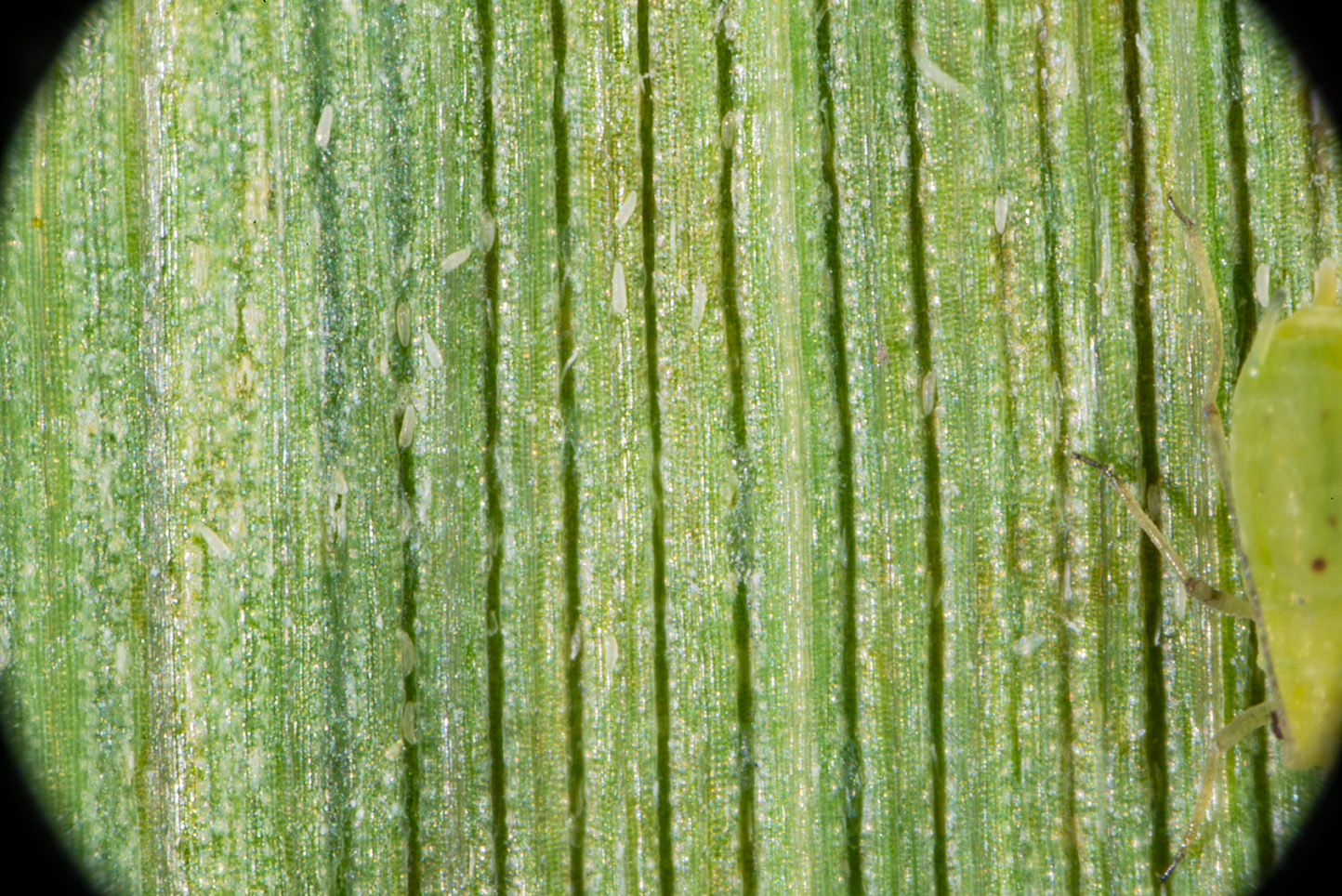Samples of timothy hay, with outward symptoms of drought stress, were sent to Purdue’s Plant & Pest Diagnostic Lab. Though the timothy had received ample moisture, about 60% of the leaves were reported stunted, curling, and yellowing on the leaf tips. Because some aphids were found, we were asked to inspect the sample. Close inspection of the leaves revealed that they were heavily infested with mites.
Cereal rust mites, Abacarus hystrix (Nalepa), are reported as troublesome in timothy in the northeastern states. These very small (<1 mm), light colored, cigar-shaped mites are probably just as abundant in Indiana, but our acreage of pure stands of timothy hay are likely less common, and the mites and their activities seldom noticed. The mites’ feeding causes leaf rolling, as plant cells are punctured. Severe feeding, as in this sample, will also stunt the plant and cause yellowing. These symptoms are not diagnostic and could be confused with an array of viruses that are transmitted by aphids. Shaking leaves over sheets of white paper in the field will dislodge mites so they can be seen as moving specks on the paper.
If there is good news with this seldom-seen pest, it is that their damage is worst in the first-cutting of hay. Hopefully, these damaged fields will receive abundant rainfall for the remainder of the season to stimulate growth for additional cuttings. In general, pest mites don’t thrive on well-hydrated, healthy plants. Why cereal rust mite populations exploded this year in these fields remains a mystery, and hopefully they don’t return in high numbers in future years. But they mite!

Cereal rust mites, on leaf sample, compared in size to an aphid and portion of a penny. (Photo Credit: John Obermeyer)

Closer view of timothy leaf tissue with cereal rust mites, compared in size to legs of an aphid. (Photo Credit: John Obermeyer)


